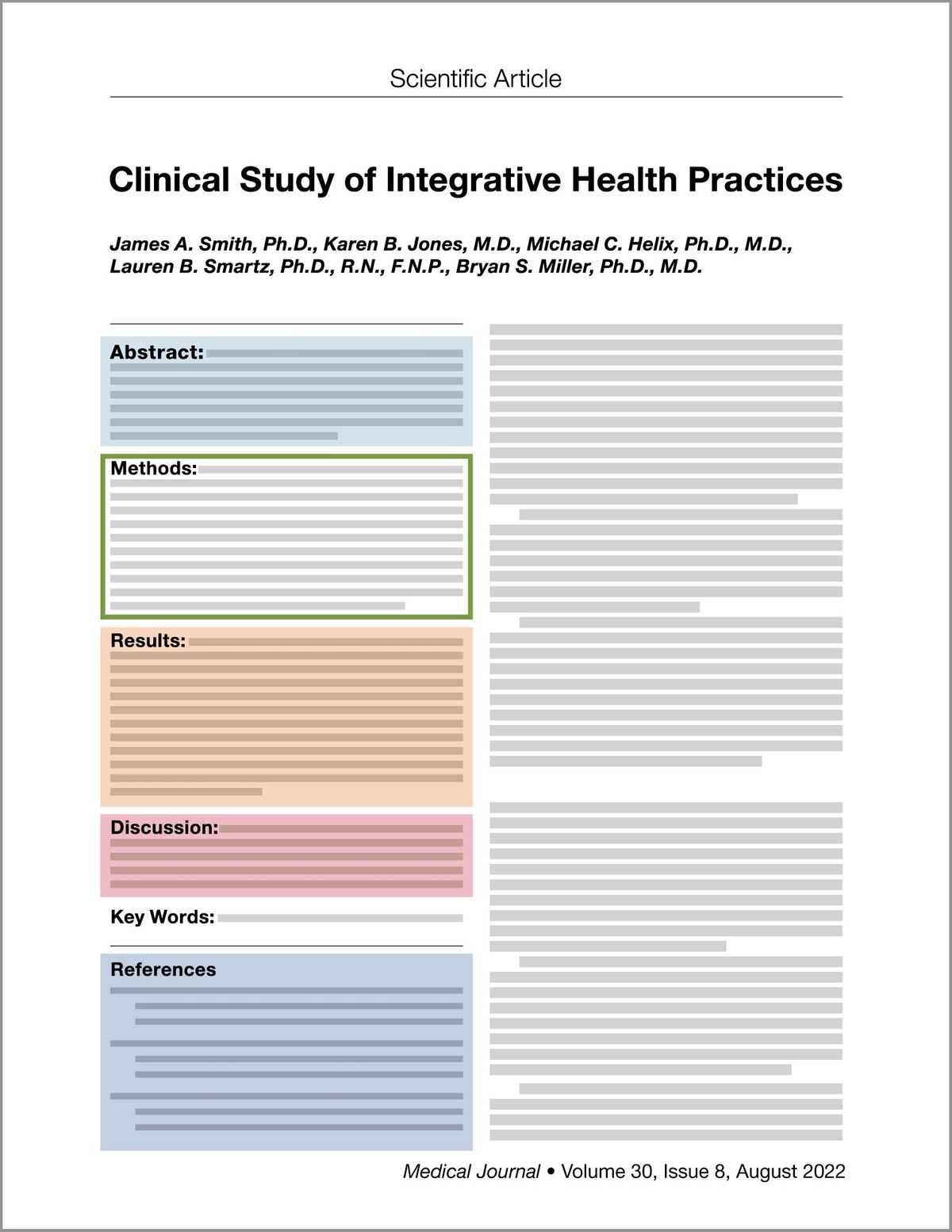Know the Science: How To Make Sense of a Scientific Journal Article

Click on one of the highlighted areas to learn more
Methods
Detailed information on the type of research or approach used, the study’s design, the participants, the measurements or outcomes recorded, and steps taken to avoid bias.
Types of Research
- Basic research: Scientists ask questions about theories or concepts, and test hypotheses to improve scientific knowledge. It’s the first step in any research.
- Translational research: Researchers build on the observations and results of basic research to develop and test new ways to prevent, detect, or treat conditions and diseases.
- Clinical trials: Well-planned clinical trials are done with people and may vary in size and type. Clinical trials give the clearest information about whether a treatment or a lifestyle change is effective and safe in humans. However, because they are complicated, lengthy, involve many research participants and can be very expensive, they are usually done only after smaller preliminary studies have been completed.
- Systematic reviews and meta-analyses: When researchers review each other’s research to check for quality and look for converging evidence among studies, they may write systematic reviews and meta-analyses. These look at different studies on the same topic. When many studies come to the same conclusion, it helps us know that the results are reliable and valid.
While all research studies are important and contribute to our knowledgebase, clinical trials are the types of studies you probably hear about most often in the news. They can have the most immediate impact on improving health and treating disease.